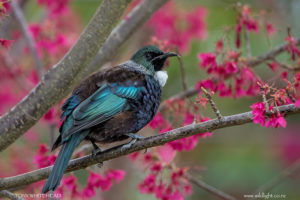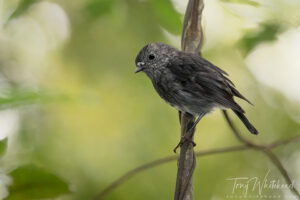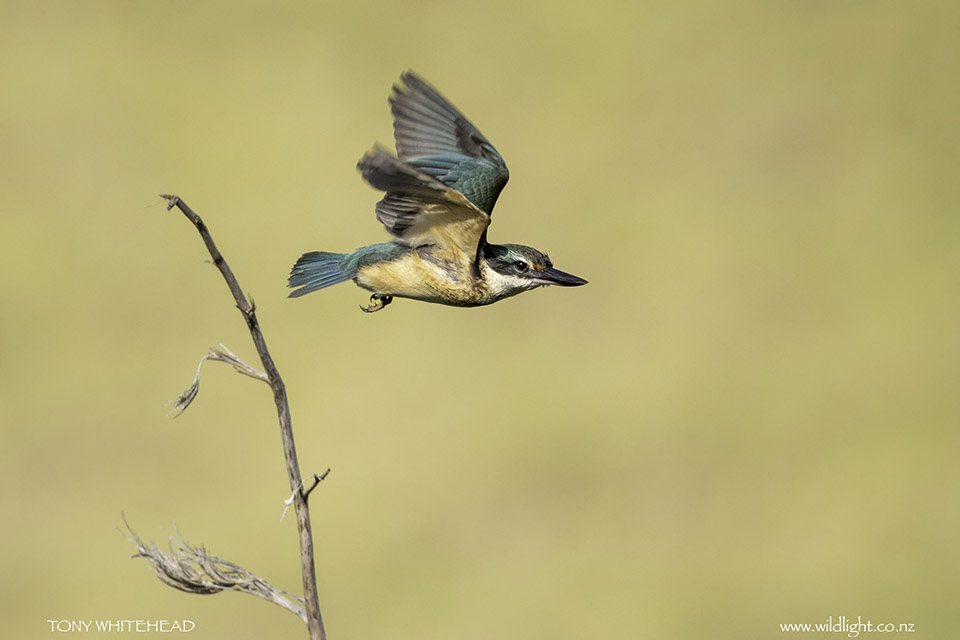
A bonus from our trip to Tawharanui was the opportunity to photograph Kingfishers as well as the Brown Teal/Pateke. New Zealand has one native kingfisher, the Sacred Kingfisher/Kotare (Todiramphus sanctus), which also occurs in Australia, New Caledonia, Loyalty, Kermadec, Lord Howe and Norfolk Islands. The different geographic populations are considered subspecies with the New Zealand Kingfisher named vagans.
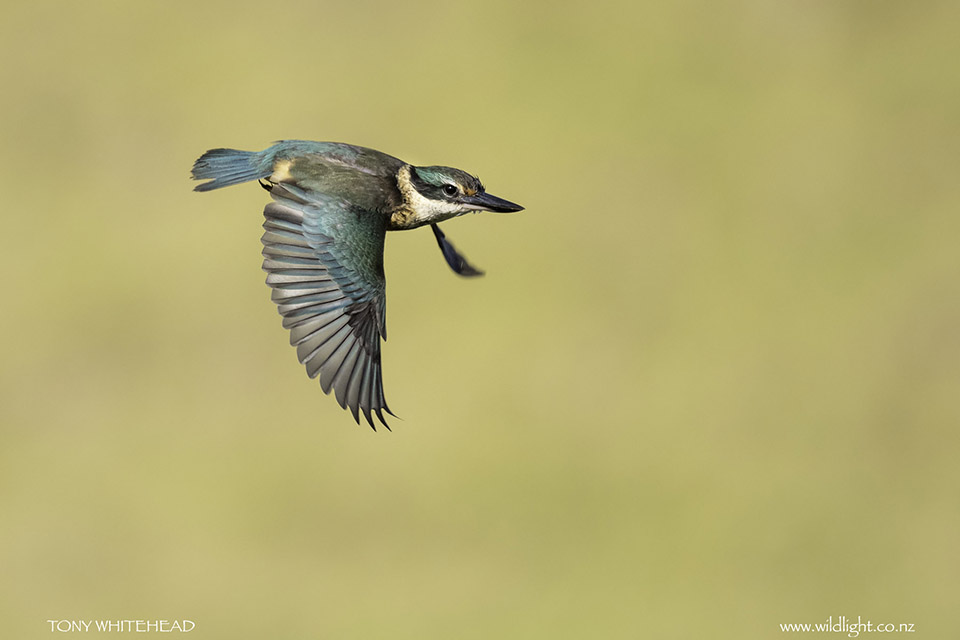
Kingfishers typically sit on a perch observing an area for movement of prey and then launch down to capture it. Having excellent vision they are often wary and difficult to approach closely for photography. Hide based photography is useful but opportunistic Kingfisher photography can be difficult in most habitats.
This Tawaharanui Kingfisher was quite cooperative and tolerated a closer approach than many would. I saw him on his flax perch while we were having a picnic lunch and managed to approach from behind a tree and take some images through a gap between trunks. Beyond the tree was a stretch of open grass and I didn’t expect him to tolerate a closer approach but moving at an angle I got a lot closer without triggering any signs of disturbance so set up to watch and photograph. I was lucky to get a launch series as he dived down to catch a prey item from the grass to my right before dismembering it and feeding in an adjacent tree.
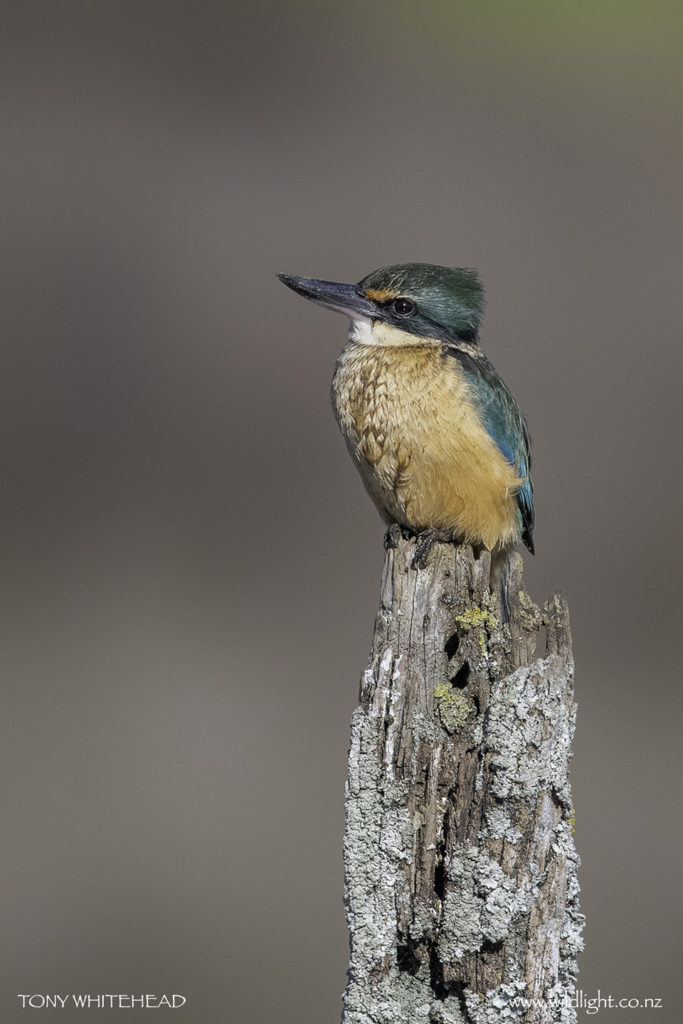
There were a number of Kingfishers feeding on the muddy margins of the lagoon and a set of weathered fence posts provided good observation perches for them. The bird above chose the closest post to me which gave me the chance to try a variety of compositons. Small changes in position can result in a completely different feel to an image by changing the background. I have written about this in the past and this was another occasion to illustrate the point.
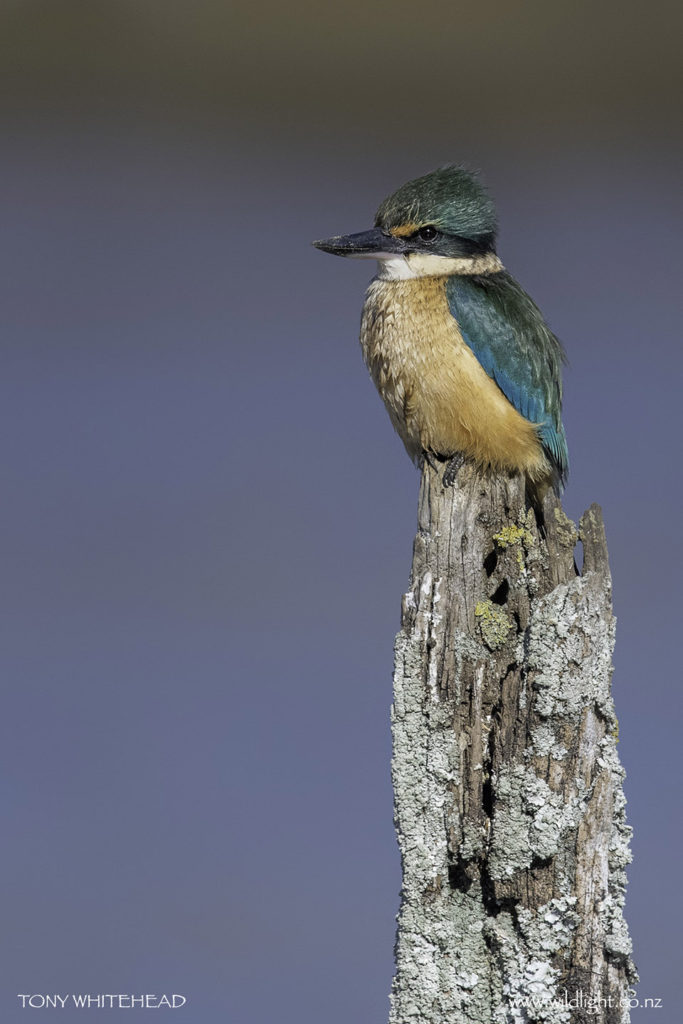
By elevating my shooting position from crouching to standing I was able to change the background from distant vegetation surrounding the lagoon to the reflection of sky on the water of the lagoon. I would have liked to achieve a complete blue background but this would have required growing a further 6 inches in height or having a stool to stand on as tip toes were not quite enough.
Photos with Nikon D500, Nikon 500mm f5.6PF lens + Nikon TC14E teleconverter.
